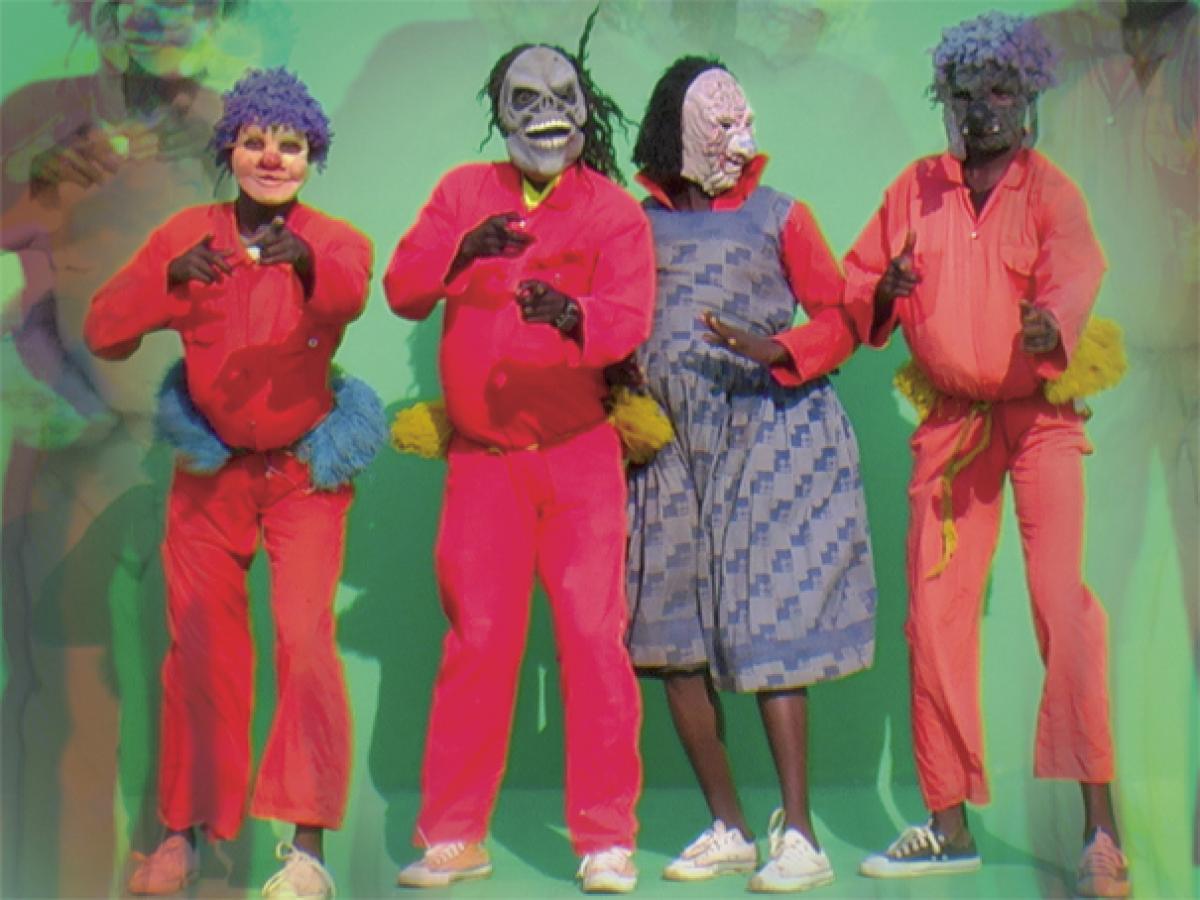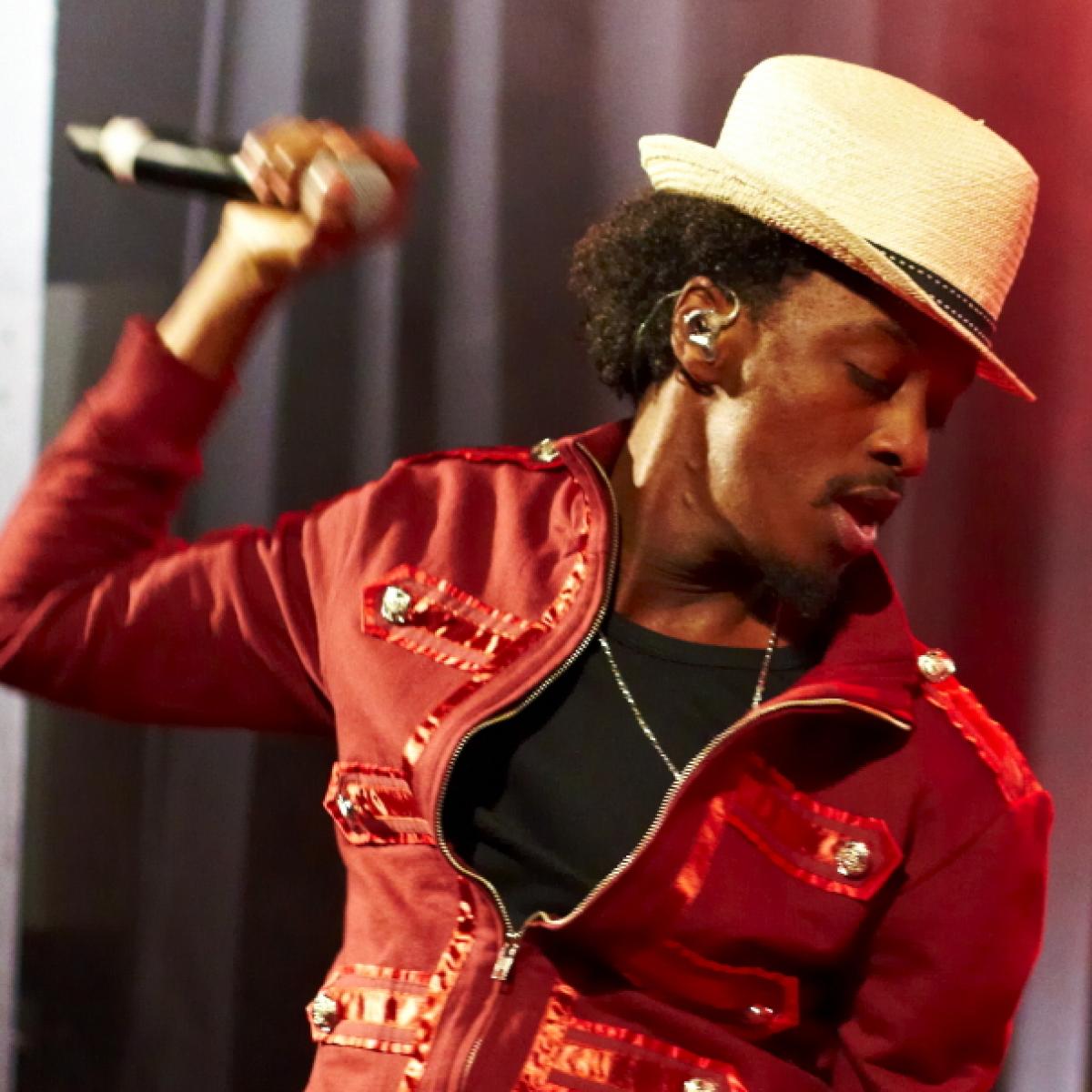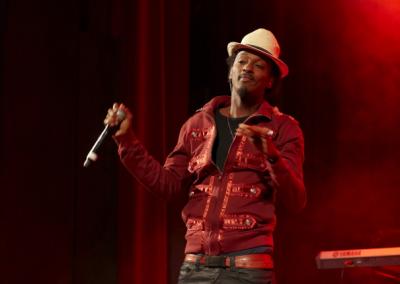
Shangaan Electro
Die rasend schnellen Melodie-Pattern des neu entdeckten Stils «Shangaan Electro» aus Südafrika werden mit der «Minimal Music» von Steve Reich verglichen. Sie klingen aber ganz anders.
«Shangaan Electro»: So nennt sich eine frisch entdeckte Musik aus Südafrika. Sie setzt auf verzwickte Melodien auf Marimba, Midi-Keyboard-Orgeln und Synthesizer, kurze repetitiven Gesangs-Samples (oft in Englisch), eher zurückhaltende Off-Beat-Rhythmen und Schlagzeug-Breaks. Das angeschlagende Tempo ist allerdings rasant: meistens um die 180 Beats pro Minute. Tänzer in clownesken Kostümen und Masken bewegen ihre Glieder dazu so, als hätten ihre Körper keine Knochen.
Produziert wird «Shangaan Electro» von der Shangaan Bevölkerung (den Tsonga). Diese sind mehrheitlich aus dem südlichen Mozambique und aus der südafrikanischen Provinz Limpopo eingewandert und leben heute im Township von Soweto. Eine Reportage über die Szene gibt es auf dem Blog Nialler9.
Das Genre «Shangaan» existiert schon lange, allerdings als elektrische (und nicht elektronische) Musik. George Maluleke und seine Band gelten als Pioniere dieses Stils. Der Blog 27 Leggies: Bringing Tsonga Music to the Masses schreibt: «He is 52, born and bred in Bangwani Village near Malamule, and has (or had in 2006) four wives and 14 children. It presumably must be a struggle to support so many by music alone, as "he also has two mini-buses which he bought with the proceeds of his albums". Or maybe they are just for transporting the family down to the shops.»
Hier zwei Stücke von George Malukele: «Nizondha Swiendlo» (2003) und «Tinhlolo» (2005):
Ausserhalb von Soweto war «Shangaan Electro» lange weitgehend unbekannt. Die Musik hat jetzt das Interesse der internationalen Blogger-Gemeinschaft geweckt, weil der Produzent und Blogger Wills Glasspiegel für das Label «Honest Jons» die Compilation CD «New Wave Dance Music from South Africa» produziert hat. Über seinen Recherche-Prozess informierte Glasspiegel auf verschiedenen Blogs. In seinen Texten lässt er zum Beispiel den Produzenten Nozinja zu Wort kommen: «Shangaan dancers, they dance, they can go on for almost an hour with that speed, without getting tired. When you see them dance you feel like they have got no bones. It's similar to the Zulus, but faster and we put a lot of style inside. There's disco in there, we use Pantsula moves. We don't use the sounds of the hip-hop guys, or the afro-pop, or whatever, we're using Shangaan sounds. The traditional Shangaan music is fast. You play it slow, they won't dance»
Der Journalist Eddie «Stats» Houghton vergleicht den Stil in seiner Kolumne Ghetto Palms auf dem Blog «The Fader» sogar mit Steve Reich: «Electrified Shangaan music is shockingly fast, yet weirdly meditative. Quadruple-time tempos alternate with one-drop chord changes and slippery shifts of emphasis. It is so sped up that sometimes the individual beats blur into more of a vibration than a rhythm and it gets somehow atmospheric. This makes it extremely DJ-friendly in the sense that it’s almost impossible to find a beat that doesn’t blend, even potential trainwrecks become Steve Reich-ian phase poems. The main tropes seem to be helium voices, ‹Nude Photo›-like synths and frenetic clown-costume dance routines.» (Houghton, 2010)
Ein Vorgänger-Stil von «Shangaan Electro» heißt übrigens «Tsonga Disco». «Tsonga Disco» setzte allerdings auf einen langsameren Beat (ca. 110 BPM). Stars des Genres hiessen Penny Penny und Peter Teanet. Einige Tracks stehen hier frei zum Download.
Biography
Published on August 18, 2010
Last updated on April 30, 2024
Topics
From breakdance in Baghdad, the rebel dance pantsula in South Africa to the role of intoxications in club music: Dance can be a form a self-expression or self-loosing.
Why does a Kenyan producer of the instrumental style EDM add vocals to his tracks? This topic is about HOW things are done, not WHAT.
Place remains important. Either for traditional minorities such as the Chinese Lisu or hyper-connected techno producers.



